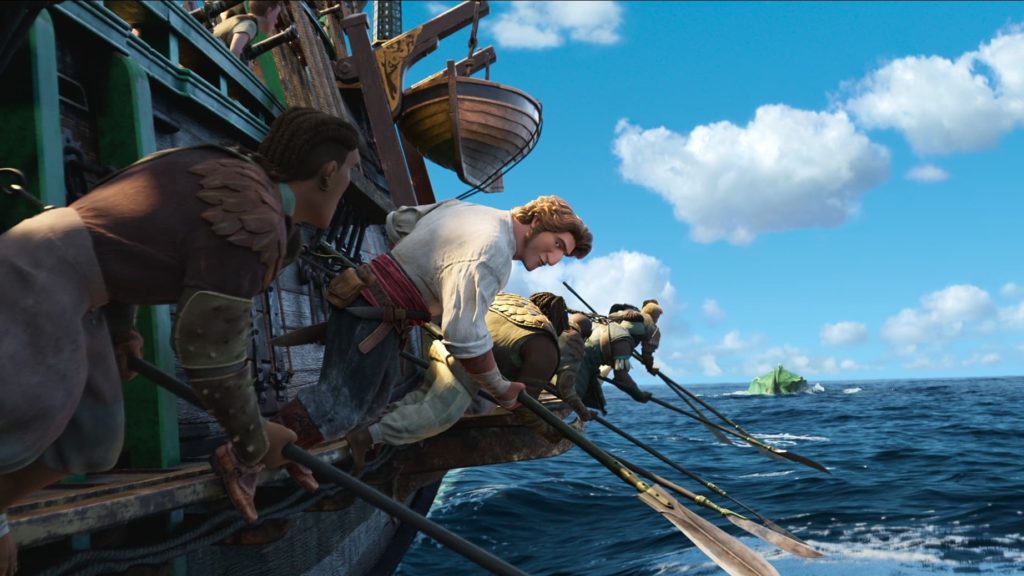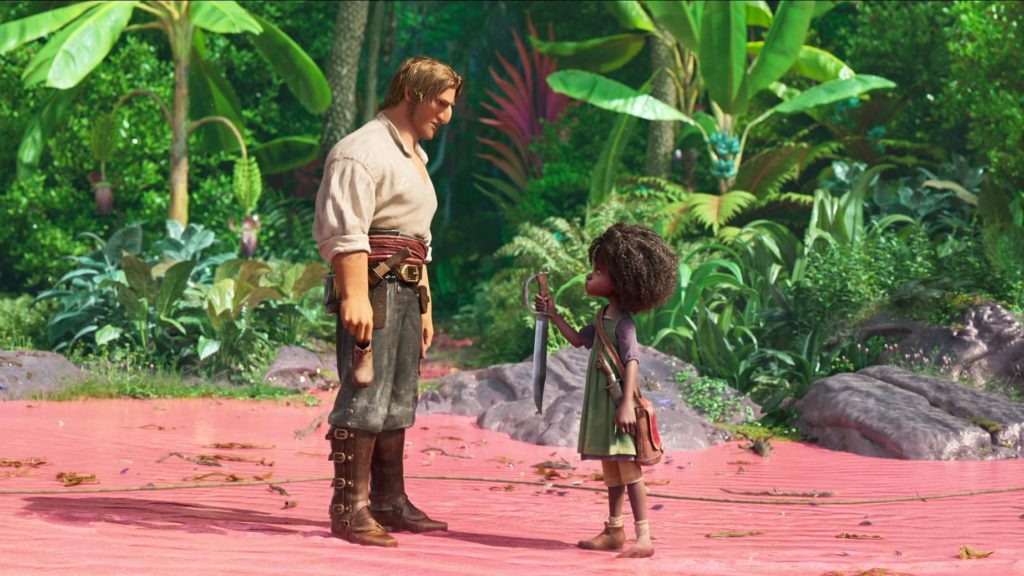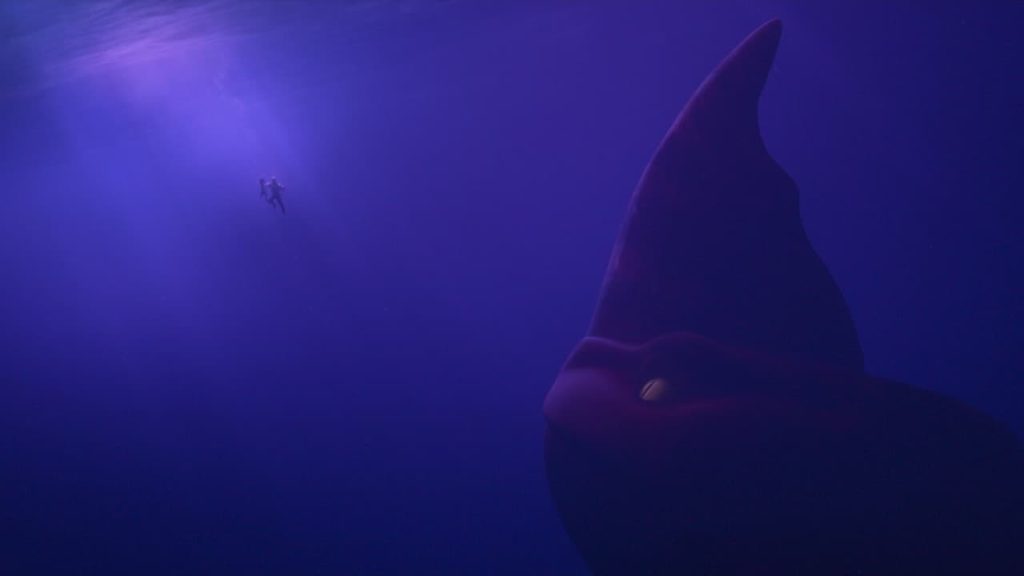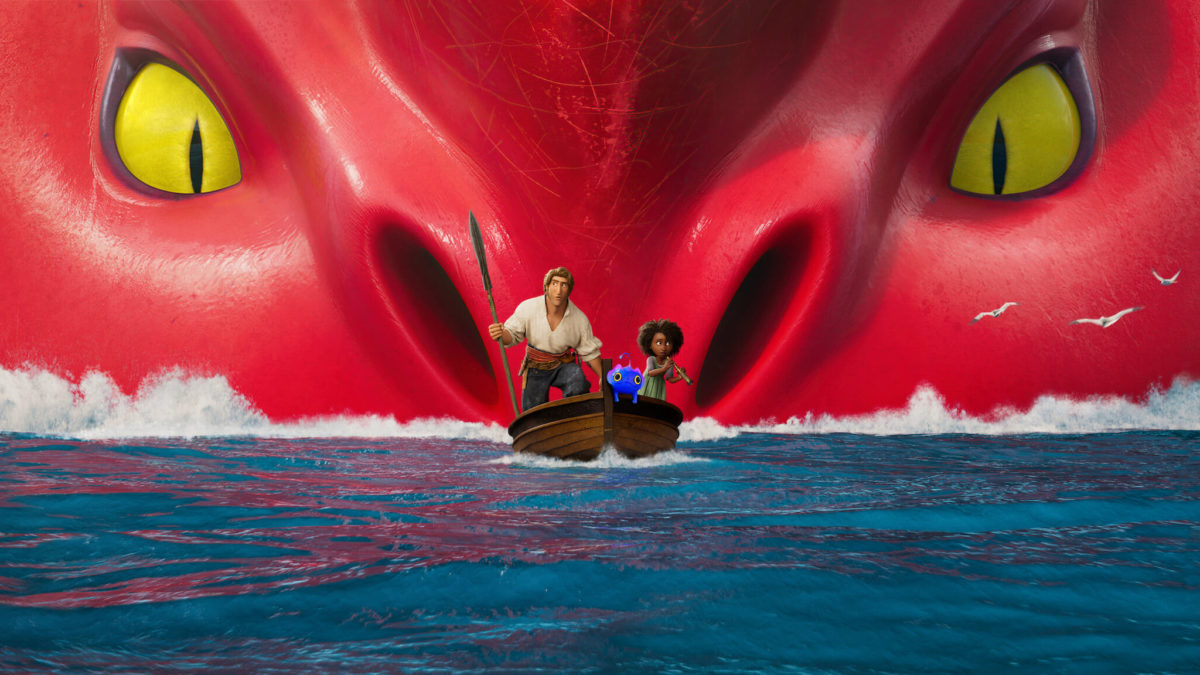The B-minus beast
How to Train Your Dragon came out 13 years ago, and I’d imagine the target audience for The Sea Beast is about 11 years old. So, sure. I don’t blame Netflix and Chris Williams too much for essentially rebooting that story and changing a few details. And, hey, the movie got a nomination for Best Animated Feature, so I guess they can call it a success.
But just be aware that this movie is really, really like How to Train Your Dragon. You can map most scenes and characters one-to-one between the two movies. The one exception is the ending, where The Sea Beast has as its big bad guy the military-industrial complex instead of a gnarly, giant dragon, but more on that in a bit.

The Sea Beast stars Maisie (Zaris-Angel Hator), an orphan who dreams of becoming a sea beast hunter like her parents were. Maisie narrates a five-minute introductory sequence that teaches us about the long war between sea beasts and hunters. This segment in particular suffers in comparison to the masterful opening minutes How to Train Your Dragon. But more strangely still, Maisie then complete disappears for nearly 20 minutes as we get another introductory segment. This one shows us the current state of affairs on a ship called the Inevitable. Its crew includes a grizzled sea dog named Captain Crow (Jared Harris), his adopted son and apprentice Jacob (Karl Urban), and first mate Sarah Sharpe (Marianne Jean-Baptiste) — the latter a particularly fun character, badass with some maternal instincts that will eventually come in handy.
But eventually — and it’s far too long of an “eventually,” almost 45 minutes — we meet the premise proper: Maisie, who stows away on the Inevitable, and Jacob get swallowed by a Red Bluster, the biggest and fiercest sea monster of all. I really like the scene that kicks this off and pretty much any segment that involves action on the seas. The effects animation in The Sea Beast, which was produced by Netflix but partially contracted to powerhouse Sony Pictures Imageworks, is absolutely outstanding. I might even get a little carried away and call this the best water has ever been rendered in a CGI kids animated feature. (I would call it the best water in CGI history, but I suspect Avatar 2, which I haven’t seen yet, surpasses it. And for hand-drawn animation, I’d obviously crown Ponyo or The Little Mermaid.)
The water isn’t the only thing that looks great in the film. The lighting is absolutely wonderful. It’s often sourced from glowing fires or dusty sunbeams or translucent, illuminated water. The sea battles also include various flamethrower weapons which don’t entirely fit in the universe, but are still a huge treat to look at.

Anyways, Maisie and Jacob get swallowed by the giant Night Fury Red Bluster, only for it to turn out that — *feigned surprise gasp* — the sea monster isn’t quite so mean as the hunters have made it out to be. Just a bit misunderstood. In fact, the Red Bluster saves Maisie and Jacob from the sea then gives them a ride to dry land. She lets them ride in… well, her nostril. For all the very good segments in this film, there really are a handful that are undercooked or just don’t make very much sense, and the nostril ride, so strange and unexplained presented as something glorious, is chief among them.
Maisie is the first to catch on that she should be befriending the sea monsters, not hunting them, and so she takes the initiative to name the Red Bluster creature that saved them. The name she lands on is — get this — Red.
What’s notable about the design of the creatures is not the look and shape itself, but the way the creatures’ massive scope is evoked. Red is huge and intimidating and awesome. Her texturing is too smooth and rubber ducky-looking in close-ups, but it hardly matters in most shots. She’s rendered as kaiju, an incomprehensibly large, world-swallowing force.

Though Red is much bigger than Toothless, The Sea Beast pulls one of my favorite visual touches from How to Train Your Dragon, which is capturing the eyes with vivid color and big, expressive movements to give the creature a sense of life. Deeply animalistic yet vibrant, those eyes are what make sure that we empathize with Red as much as Maisie does. This effective visual representation of Red makes it easy to ignore how little the script actually gives us to care about her as a character. I could’ve done with a few more scenes of Maisie and Red bonding, or still moments observing sea beast life in place of some of the human drama we end up with.
You know where this is all headed if you’ve seen How to Train Your Dragon. Big-scale culture clash of monster-lovers and monster-haters, plus a calamitous physical confrontation. But there’s a little more to it than I expected, and so I do want to briefly address the film’s finale, which falls slightly off-template. So I’ll warn you of ending spoilers for the next two paragraphs.

In the midst of the struggle for whether to hunt or befriend Red is some business about the king and the queen threatening to end the order of the private monster-killing Hunters, and instead use the royal military to slay beasts. At first, I thought that this was a way to heighten the stakes for the Hunters, whose perspective we share for most of the film, and nothing more than that. But as the film reaches its climax, it emerges as something more in a twist ending: Maisie deduces that the royalty have entirely manufactured the public perception that the sea beasts are “enemies” or “dangerous,” whereas they are actually peaceful and kind by nature.
Maisie reveals this to the public and kicks off her own revolution, a Kiddie World Order. This ending is big and silly and galaxy-brain stupid. I’m all about tearing down the upper class and eating the rich, but the way social revolution is depicted here makes absolutely no sense. First of all, it’s not even clear how the royalty benefits from this supposed conspiracy — it’s not as if the sea beasts provide food or resources the royals want to manipulate, and it’s not insinuated that they want to control the masses with fear.
Second of all, and more to the point of the film a storytelling object, Maisie makes one thirty-second speech to a crowd announcing what is essentially a wacky conspiracy theory with no evidence. And yet she immediately incites the fall of the kingdom? It’s outlandish and not supported well enough to overcome its implausibility.
In spite of the baffling conclusion (and to a small extent because of it), I really did like the Sea Beast for most of its runtime. The story is serious and ambitious, just lacking polish and innovation. Much of the animation is terrific. It’s no How to Train Your Dragon, but then again, not many movies are.
- Review Series: 2022: Year in Film
Is It Good?
Good (5/8)
Dan is the founder and head critic of The Goods. Follow Dan on Letterboxd. Join the Discord for updates and discussion.

